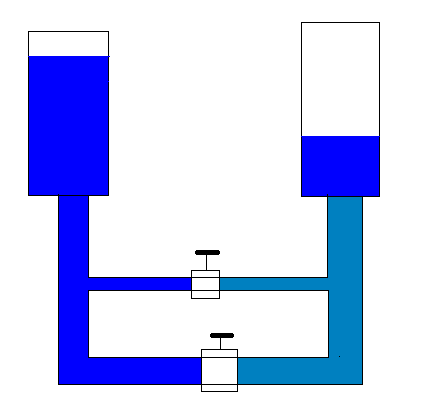Hello.
I am a beginner, I have already read a bit about electronics, I know more or less the principles of operation of some electronic components, but there are still things that I cannot comprehend and maybe that is why I cannot take the next steps forward in electronics, so I am asking everyone for understanding and help.
To begin with, I would like to ask you for help in explaining the principle of voltage and current in electronic systems:
1) Voltage - I often wonder why, for example, systems are powered with 9V, and others, for example, with 12V. For example, I see that if the voltage supplying a given system is 12V, it means that there is at least one element in the system that requires a voltage of 12V So, in my opinion, the supply voltage may be dependent on at least one element in the system, so let's say if there was an element in the system that would require, say, 9V, and there would be no other element that would require more than 9V, the system would only need to be powered by voltage of 9V.
2) Intensity - I cannot understand what role the current plays in the system, I see it, for example, that it is the current that powers the entire system, i.e. that it is the current that causes the entire system to work, but I do not understand what the voltage is for in this case Couldn't there be just current or voltage? Or let's say that everything should always be at the same voltage, let's say 12V, the intensity that the system always gets from the source as much as it needs?
Please explain to me where my reasoning goes in the wrong direction.
I am a beginner, I have already read a bit about electronics, I know more or less the principles of operation of some electronic components, but there are still things that I cannot comprehend and maybe that is why I cannot take the next steps forward in electronics, so I am asking everyone for understanding and help.
To begin with, I would like to ask you for help in explaining the principle of voltage and current in electronic systems:
1) Voltage - I often wonder why, for example, systems are powered with 9V, and others, for example, with 12V. For example, I see that if the voltage supplying a given system is 12V, it means that there is at least one element in the system that requires a voltage of 12V So, in my opinion, the supply voltage may be dependent on at least one element in the system, so let's say if there was an element in the system that would require, say, 9V, and there would be no other element that would require more than 9V, the system would only need to be powered by voltage of 9V.
2) Intensity - I cannot understand what role the current plays in the system, I see it, for example, that it is the current that powers the entire system, i.e. that it is the current that causes the entire system to work, but I do not understand what the voltage is for in this case Couldn't there be just current or voltage? Or let's say that everything should always be at the same voltage, let's say 12V, the intensity that the system always gets from the source as much as it needs?
Please explain to me where my reasoning goes in the wrong direction.



